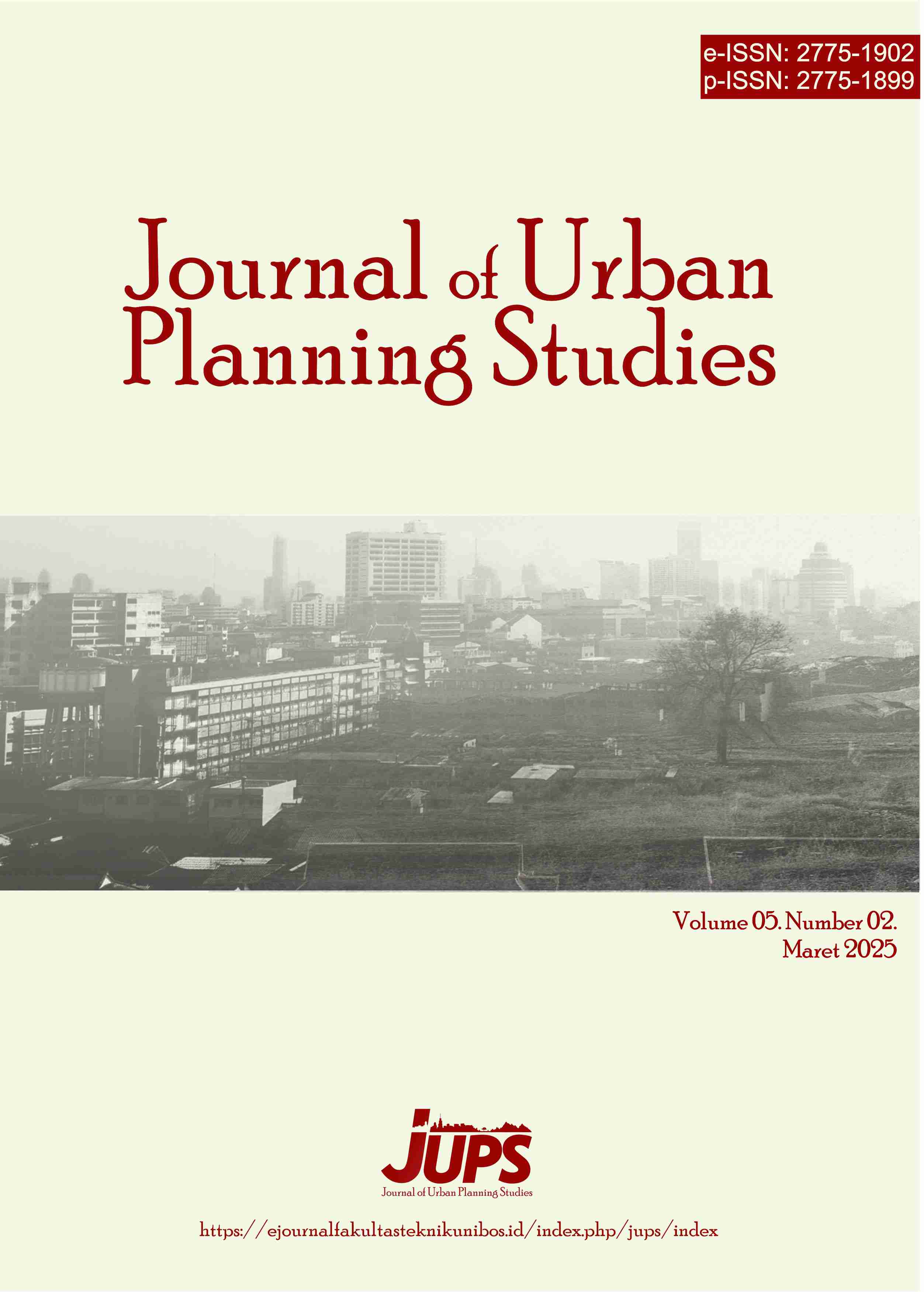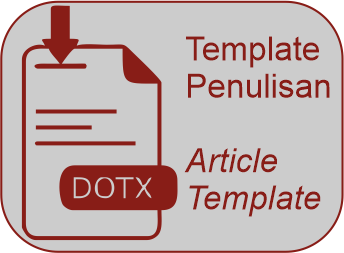MITIGATION DIRECTION FOR FLASH FLOOD DISASTER IN MAMBI SUB-DISTRICT, MAMASA DISTRICT
DOI:
https://doi.org/10.35965/jups.v5i2.700Keywords:
Flash Flood, Hazard, Vulnerability, MitigationAbstract
The purpose of this research is to determine the level of vulnerability and susceptibility of flash floods in Mambi Sub-district, Mamasa Regency, and formulate directions for mitigating flash floods in Mambi Sub-district, Mamasa Regency.
This research uses a descriptive method using qualitative and quantitative approaches, which combines primary data collected through field surveys and interviews, and secondary data sourced from various literature references. The analysis method used in this research is Superimpose (overlay) analysis and descriptive analysis.
The result of this research is that there are 3 (three) classifications of the level of vulnerability and susceptibility of flash floods in Mambi Sub-district, Mamasa Regency, namely low, medium and high classes and the direction of mitigation policies in the form of structural and non-structural mitigation.
References
Abuzied, S. M., et al. (2016). Effective strategies for flood risk mitigation. Natural Hazards, 82(1), 123–139.
Adi, S. (2013). Flash flood dynamics in tropical regions. International Journal of Environmental Studies, 70(2), 145–158.
Arachchige, U. J. (2015). Definition and characteristics of flash floods. Hydrology and Earth System Sciences, 19(4), 2345–2356.
Brody, S. D., Highfield, W. E., & Blessing, R. (2021). Land use controls and flood mitigation: How effective are planning strategies?. Journal of Planning Literature, 36(1), 50–65.
Demeritt, D., Nobert, S., Cloke, H., & Pappenberger, F. (2020). The European Flood Alert System: Assessing the effectiveness of warnings and evacuation procedures. Journal of Flood Risk Management, 13(4), e12604.
Herawati, H., et al. (2022). Indonesia's disaster risk profile. Journal of Disaster Research, 17(3), 123–135.
Jonkman, S. N., & Dawson, R. J. (2019). Flood risk reduction through structural measures: Current approaches and future challenges. Natural Hazards, 99(2), 1235–1255.
Kubal, C., Haase, D., Meyer, V., & Scheuer, S. (2019). Integrated urban flood risk management: A strategy for risk reduction in the face of climate change. Journal of Hydrology, 573, 123–132.
Kundzewicz, Z. W., Hegger, D. L., & Matczak, P. (2018). Flood-risk reduction: Structural measures and the non-structural response. Natural Hazards and Earth System Sciences, 18(12), 3087–3102.
Kusumo, P., & Nursari, E. (2016). Zonasi tingkat kerawanan banjir dengan sistem informasi geografis pada DAS Cidurian Kab. Serang, Banten. String (Satuan Tulisan Riset dan Inovasi Teknologi), 1(1), 66–73.
Maskrey, A., Jain, G., & Lavell, A. (2020). Community-based disaster risk reduction. Disaster Prevention and Management: An International Journal, 29(5), 673–684.
Pardeshi, S. D., Autade, S. E., & Pardeshi, S. S. (2013). Landslide hazard assessment: Recent trends and techniques. SpringerPlus, 2(1), 523.
Pinos, J., & Timbe, L. (2019). Flood risk assessment and management: Review of methodologies and challenges. Water, 11(10), 2071.
Rahman, A., et al. (2022). Indigenous wisdom in flash flood adaptation and mitigation. Environmental Science & Policy, 120, 45–56.
Reichenbach, P., Rossi, M., Malamud, B. D., Mihir, M., & Guzzetti, F. (2018). A review of statistically-based landslide susceptibility models. Earth-Science Reviews, 180, 60–91.
Taufik, Q., & Firdaus, D. (2012). Pemetaan ancaman bencana tanah longsor di Kabupaten Konawe. Jurnal Aplikasi Fisika, 8(1), 36–40.
Thieken, A. H., Kienzler, S., Kreibich, H., Kuhlicke, C., & Merz, B. (2022). Enhancing flood resilience through effective public engagement and risk communication. Environmental Science & Policy, 127, 21–30.
Wang, L., et al. (2023). Integrating hydrological models for improved flash flood risk assessment. Water, 15(9), 1700.
Wohl, E., Lane, S. N., & Wilcox, A. C. (2021). The role of upland forest restoration in reducing flood risks downstream. Earth Surface Processes and Landforms, 46(12), 2461–2475.
Yan, X., Huang, J., & Qin, H. (2020). Effectiveness of detention basins in urban flood risk management: Case studies in China. Urban Water Journal, 17(8), 679–690.
Zhou, Y., et al. (2024). Advances in flash flood risk assessment: A multidisciplinary approach. Journal of Hydrology, 610, 127–139.
Downloads
Published
How to Cite
Issue
Section
License
Copyright (c) 2025 Alber Kala, Rahmawati Rahman, Tri Budiharto, Ahmad Faqhruddin Abdur-Rabb

This work is licensed under a Creative Commons Attribution 4.0 International License.













